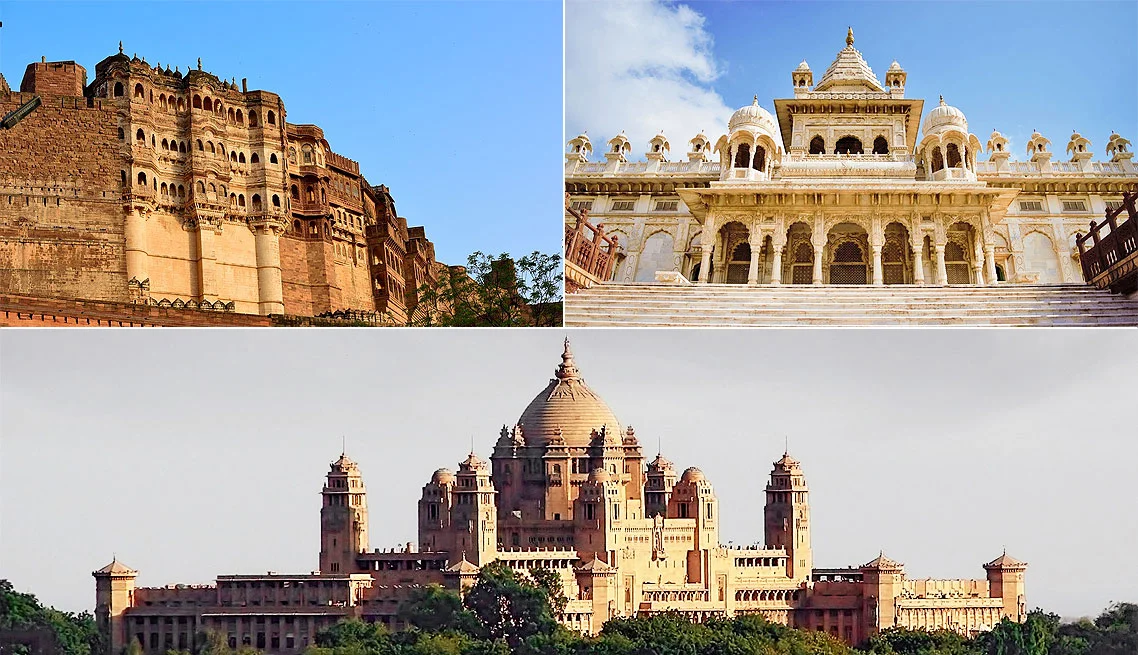
Jodhpur was founded by Rao Jodha, a chief of the Rathore clan, in 1459, and is named after him. Jodhpur was previously known as Marwar. It is the second largest city in Rajasthan, divided into two parts — the old city and the new city. The old city is separated by a 10 km long wall surrounding it. It has eight gates leading out of it. The new city is outside the walled city. Often referred to as the Blue City, Jodhpur is filled with grandeur, royalty and ethnicity. For an overview of Jodhpur, and the blue houses of the old town, nothing beats heading up to the Mehrangarh Fort. From this majestic fort’s crenelated ramparts you enjoy postcard views of the ancient blue city below and, in the distance, the grand silhouette of the Umaid Bhawan Palace, residence of the current Maharaja and a heritage hotel. A bird eye’s view from the mighty Mehrangarh Fort offers a 360 degree view of the blue city.
MAIN HIGHLIGHTS:
Mehrangarh Fort – 400 ft above the skyline of Jodhpur city, on a perpendicular cliff, stands the mighty, majestic Mehrangarh Fort. Made of red sandstone, it is home to many gardens, courtyards and palaces known for their intricate carvings, elaborate balconies and
arched galleries within the complex. The fort is guarded by 7 large gates.
Jaswant Thada – A memorial to Maharaja Jaswant Singh II, this white marble cenotaph is at a kilometre’s distance from the Mehrangarh Fort. The centopah is famous for its architectural marvels as it adorns an array of whimsical domes, built out of intricately carved sheets of marble.
Umaid Bhawan Palace – One of the most fascinating palaces of Jodhpur is the Umaid Bhawan Palace; also one of the newest palaces built in India in recent times. Maharaja Umaid Singh constructed the palace in the 20th century for the welfare of the people of Jodhpur. The purpose was to create employment to the people of Jodhpur. A part of the palace has now been converted into a hotel and a museum.

